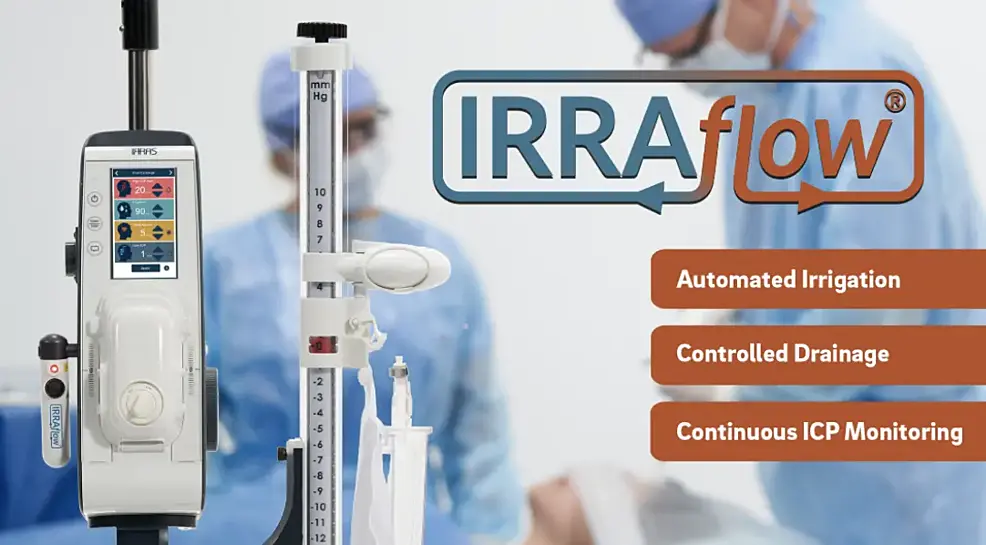Presentation Documenting Use of IRRAflow System Confirms Potential Improved Outcomes Compared to Traditional Drainage Solutions

Sponsored by IRRAS
Presentation of Largest Dataset to Date Documenting Use of IRRAflow System Confirms Potential Improved Outcomes Compared to Traditional Drainage Solutions
The neurosurgery team from the Rockefeller Neuroscience Institute at West Virginia University and WVU Medicine Ruby Memorial Hospital (WVUH), led by Dr. Nicholas Brandmeir, presented the clinical outcomes from the first 45 patients they treated with the new breakthrough technology, IRRAflow, a dynamic system that provides a therapeutic approach to treating intracranial bleeding. The data presented confirms the preliminary effectiveness of the IRRAflow system’s automated irrigation by showing a 0% occlusion rate during the entire course of treatment. On the other hand, clinical literature documents that traditional passive drainage solutions have catheter occlusion rates of up to 47%.1
Additionally, IRRAflow’s mechanism of action was also shown to more effectively remove collected blood after intracranial bleeding. The average treatment time with IRRAflow was 6.8 days, and only 13% of patients required the placement of a shunt after IRRAflow treatment. This percentage of shunt dependence with IRRAflow compares favorably to data from the CLEAR-III where 18% of patients required shunt placement after treatment with a passive ventricular drain.
Click the image above to view the PDF and learn about how preliminary data confirms that IRRAflow might reduce rates of catheter occlusion, infections, symptomatic and radiographic vasospasm.

1. Fargen KM, Hoh BL, Neal D, O’Connor T, Rivera-Zengotita M, Murad GJ. The burden and risk factors of ventriculostomy occlusion in a high-volume cerebrovascular practice: results of an ongoing prospective database. Journal of Neurosurgery. 2015:1-8.

.png)

